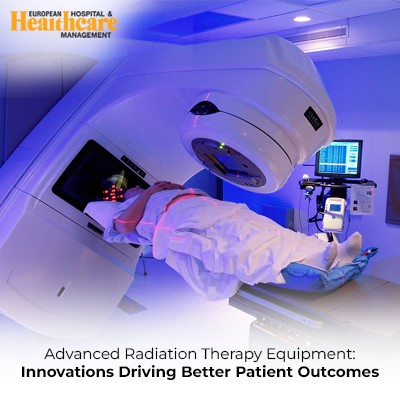Advancements in radiation therapy equipment have revolutionized cancer treatment, offering more precise, effective, and less invasive options. Innovations like IMRT, IGRT, SBRT, proton therapy, ART, and AI integration have significantly improved patient outcomes by increasing tumor control, reducing side effects, and enhancing overall survival and quality of life.

Radiation therapy is a cornerstone in the treatment of cancer, utilized in nearly half of all cancer cases. The rapid advancements in radiation therapy equipment have significantly improved patient outcomes, offering more precise, effective, and less invasive treatment options. These innovations are transforming the landscape of oncology, providing hope and improved quality of life for countless patients. This article explores the latest innovations in radiation therapy equipment and their impact on patient outcomes.
Radiation therapy has come a long way since its inception in the early 20th century. The primary goal of radiation therapy is to destroy cancer cells while minimizing damage to surrounding healthy tissues. Traditional methods, such as external beam radiation therapy (EBRT) and brachytherapy, have been effective but come with limitations in precision and side effects. The need for more targeted and efficient treatments has driven the development of advanced radiation therapy equipment.
a. Intensity-Modulated Radiation Therapy (IMRT)
IMRT represents a significant leap in radiation therapy, allowing for the modulation of radiation beams' intensity. This technology enables oncologists to deliver higher doses of radiation to tumors while sparing adjacent healthy tissues. IMRT uses advanced software to plan and deliver precise radiation doses, reducing the risk of side effects and improving the efficacy of treatment.
b. Image-Guided Radiation Therapy (IGRT)
IGRT incorporates imaging techniques such as CT scans, MRI, and X-rays to guide the delivery of radiation. This ensures that the radiation is accurately targeted at the tumor, accounting for any movement or changes in the patient's anatomy. IGRT enhances the precision of radiation therapy, making it possible to treat tumors that are close to critical structures with greater safety.
c. Stereotactic Body Radiation Therapy (SBRT)
SBRT is a highly precise form of radiation therapy that delivers high doses of radiation to small, well-defined tumors in the body. It is particularly effective for treating tumors in the lungs, liver, spine, and other areas where surgery might be challenging. SBRT minimizes damage to surrounding tissues and typically requires fewer treatment sessions, improving patient convenience and outcomes.
d. Proton Therapy
Proton therapy uses protons instead of X-rays to treat cancer. Protons have unique physical properties that allow them to deposit most of their energy directly in the tumor, with minimal exit dose to surrounding tissues. This makes proton therapy an ideal option for treating tumors located near sensitive structures, such as the brain and spinal cord. Proton therapy has shown promising results in reducing long-term side effects and improving patient quality of life.
e. Adaptive Radiation Therapy (ART)
ART is an emerging approach that involves modifying the radiation treatment plan in real-time based on changes in the patient's anatomy or tumor size during the course of treatment. This adaptive approach ensures that the radiation dose remains optimal throughout the treatment, enhancing its effectiveness and minimizing side effects.
f. Artificial Intelligence (AI) and Machine Learning
The integration of AI and machine learning in radiation therapy is revolutionizing treatment planning and delivery. AI algorithms can analyze vast amounts of data to optimize radiation doses, predict patient responses, and improve treatment accuracy. Machine learning models can also assist in early detection of treatment-related complications, allowing for timely interventions and better patient management.
The advancements in radiation therapy equipment have had a profound impact on patient outcomes. The increased precision and effectiveness of modern radiation therapy techniques have led to higher tumor control rates and reduced side effects. Patients experience fewer complications, shorter recovery times, and improved overall survival rates.
Moreover, these innovations have expanded the range of treatable cancers and made radiation therapy a viable option for patients who were previously considered inoperable. The ability to target tumors more accurately has also led to better preservation of organ function and quality of life, particularly for patients with tumors located near critical structures.
Despite the remarkable progress, there are still challenges to be addressed in the field of radiation therapy. Access to advanced radiation therapy equipment remains limited in many parts of the world due to high costs and infrastructure requirements. Efforts are needed to make these technologies more affordable and accessible to a broader patient population.
Research is ongoing to further enhance the precision and efficacy of radiation therapy. The development of novel radiation delivery systems, such as carbon ion therapy, and the exploration of combination therapies with immunotherapy and targeted agents hold promise for the future of cancer treatment.
Additionally, continued advancements in AI and machine learning are expected to further refine treatment planning and delivery, paving the way for truly personalized radiation therapy. The integration of genomics and molecular profiling with radiation therapy could lead to more tailored and effective treatments, optimizing patient outcomes even further.
The innovations in radiation therapy equipment are driving a new era of cancer treatment, characterized by precision, effectiveness, and improved patient outcomes. As technology continues to evolve, the potential for radiation therapy to cure and manage cancer will only increase, offering hope to millions of patients worldwide. The future of radiation therapy is bright, with ongoing research and development promising to unlock new possibilities in the fight against cancer.